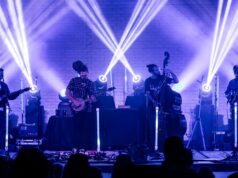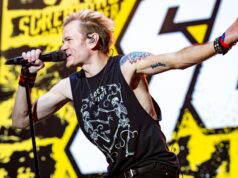
On Sunday, New York Mayor Bill de Blasio announced that he’d given the NYPD permission to issue fines of up to $500 to anyone violating social distancing mandates, the city’s latest attempt to slow the spread of covid-19 in an area devastated by the virus. “I want to just let all New Yorkers know that what we’re trying to do its say: you’ve been warned and warned and warned again,” said the same mayor who, less than a week ago, projected half a million residents would either soon be or are already out of a job. In pre-pandemic America, most families didn’t have $500 to spare. That the city’s brightest idea is to introduce cash penalties during an unemployment crisis seems wildly out of touch.
In the days since, de Blasio has encouraged residents to call 311 if they observe a “crowd forming,” and said the NYPD would be doing “whatever it takes” to keep New Yorkers socially distant on the subway, including pulling them off of trains. In a press conference on Tuesday Governor Andrew Cuomo said the NYPD would have to get even “more aggressive” than it’s been.
Staying away from other people is critical, but there’s reason to be skeptical of this model: Many of the people out in the city right now are essential low-wage workers and those who can’t afford to quarantine. Given the city’s history of selective policing, and the well-documented tendencies of people who call 311, it’s reasonable to expect New Yorkers might be punished along racial and economic lines. Gentrifiers are overwhelmingly more likely to report a “public nuisance” to 311. In nearly every American city, fines are levied most frequently against people of color, trapping them in a cycle of criminalization and debt. So it’s unclear why the city chose to lean on this “see something say something” and cash-based model of ensuring public health.
Calls and emails logged by 311 are public; a representative for the city says it has been categorizing “social distancing”-related complaints since the day de Blasio announced the fines. We mapped them out and took a look at whose calls the police were responding to so far because it’s useful to know what kind of public health concerns are being reported, and which are getting heard.
The map we came up shows the more than 1,000 311 complaints lodged about social distancing since the city started cataloging them on Sunday as their own genre, as well as how often police took action by filing a formal report or—in their terms—“taking action to correct the problem.” Of the 306 instances in which the NYPD did something about a complaint, only two resulted in formal reports, both in Queens. And the map doesn’t include anything that happens, when, say, officers are out on patrol—just how they respond when they get a tip from a civilian on the city’s line.
Given how many times de Blasio has mentioned the “nice weather” and people hanging out in parks, it seems relevant that only a handful of people called 311 about New Yorkers congregating in green spaces. It also seems relevant that the calls, which spiked sharply on Monday morning, were overwhelmingly placed in gentrifying neighborhoods in Brooklyn and Manhattan, while the police were far more likely to take action on complaints logged in the Bronx.
Asking the NYPD to enforce public health mandates is a foreseeable but troubling maneuver, even given the urgency of the pandemic and its related crisis—this is the agency in which officers have admitted to arresting sex workers for loitering specifically because they are trans, where the vast majority of people arrested for fare evasion are black and Latinx, and that enforced Michael Bloomberg’s racist stop-and-frisk policies until the moment they were declared unconstitutional in 2013. And as the coronavirus crisis in the States evolves into what will almost certainly be a long-term period of instability, there is reason to pay close attention to how state powers and anxious individuals respond to blind fear.
Recently, the National Lawyers’ Guild published a document outlining the group’s concerns that emergency powers might disproportionately affect vulnerable populations: “We believe that we can build safer communities and respond to COVID-19 without expanding the police or medical surveillance,” the NLG wrote. And in the three months since the first reported case of coronavirus in the States, public health mandates have been invoked to troubling ends: Last week, the Department of Justice announced it would charge people intentionally “spreading” coronavirus with terrorism. Hate crimes against Asian-Americans are expected to surge. And as in other moments of extreme national duress, individuals have channeled their anxieties into grotesque expressions of bias: Restaurants in Chinatowns across the country have been empty for months. All of which is to say: There are pressing reasons to stay indoors as much as possible, but sending the NYPD to investigate and fine “crowds” of people reported by fellow residents is a potentially risky idea.
For the first three days that 311 was cataloging social distance complaints, and as the mayor went on TV asking people to report their neighbors, the largest chunk of 311 complaints about social distancing by far came from Community Board District 1, a swath of Brooklyn that includes Williamsburg and Greenpoint, the heavily gentrified neighborhoods where median rents can reach $3,000 a month. The Upper West Side, Long Island City, and the district that includes Manhattan’s Chelsea and Hell’s Kitchen neighborhoods also experienced a high volume of calls. Overall, about half of the complaints were about businesses, though a significant number were targeted at residential buildings and alleged violations on the street. Surprisingly, given the general ire about crowded parks in the city, very few complaints about them were formally lodged.
But when we looked at which areas police took some kind of action in response to 311 calls the areas of interest changed. In some cases, the NYPD decides to drop a complaint, and in 65 percent of cases, officers reported investigating an issue but not directly engaging with it. But in the Bronx, police “took action to fix the problem” over 40 percent of the time; in Brooklyn, where the highest number of complaints were lodged, the did so only in one out of every four calls.
This could tell us a couple of things, one of which might be that wealthier and whiter neighborhoods are more inclined to call in a health violation. Another might be that police interactions in some neighborhoods are more likely to result in corrective action. Certainly, those points would be consistent with prior research, though it’s also possible people in Brooklyn are simply giving worse tips than people who live in the Bronx.
None of this data is conclusive: These calls were only cataloged over a few days, during a time when New Yorkers have been encouraged by their elected officials to tell on each other, and over the course of a destabilizing week where the city is soon expected to run out of necessary medical supplies. But in moments of crisis, the law has a tendency to be wielded even more selectively, and it’s become abundantly clear over the last weeks that this catastrophe will only exacerbate the forces that provide safety to a select few.
Source: gizmodo.com








